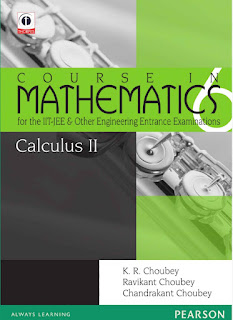Functional Components of a Computer
The basic functional components or elements of a digital computer system basically has the hardware and software. The hardware is the physical component/part such as a keyboard, mouse, monitor, etc. The software is the set of programs and instructions which perform several specific operations.
Both hardware and software together act as functional components. They help to complete the functional cycle which consists of input, processing, and output. Let us learn about the different functional components of a digital computer and their working and interconnections. Let us study the basic components of a computer.
1. Input Unit
The input unit basically includes the input devices and its operation is to take the input from the user. It converts the input data into binary code. As the computer understands only machine language (binary code).
Some important input devices are:
- Keyboard
- Mouse
- Microphone
- Scanner
- Barcode Reader
- Light Pen
- Joystick etc.
2. Central Processing Unit (CPU)
This is a really important part of a computer as it performs all the processing parts of the computer. It processes the data and instructions which the user gives. Moreover, it carries out the calculations and other such tasks. As it is present on a single small chip, it is also called a microprocessor. Other names of CPU are Central Processor or Main Processor. It has two subparts:
1. Arithmetic and Logical Unit
As the name suggests, this unit is responsible for performing arithmetic tasks like addition, subtraction, multiplication, division moreover, it also makes logical decisions like greater than less than, etc. And hence the name, the ‘brain’ of the computer.
2. Control Unit
This unit is responsible for looking after all the processing. It organizes and manages the execution of tasks of the CPU.
3. Registers
These are memory areas which the CPU directly uses for processing. So, it’s function is to store data from input or store data between calculations. In addition, it also stores the output results.
3. Memory
The parts of memory are:
Primary Memory
This is the internal memory that stores the data and instructions of the CPU. It is volatile in nature (data is lost when the power is disconnected).
The primary memory has two types:
- RAM (Random Access Memory) As per the name, data can be accessed randomly and quickly.
- ROM (Read Only Memory)As per the name, we can only read data and cannot write (store) to it.
As per the name, data can be accessed randomly and quickly.
Secondary Memory
As we know that the primary memory is volatile therefore, we need some devices to store the data permanently so we use some external storage devices for this purpose which we name as the secondary memory. Some examples: CD, DVD, etc.
4. Output Unit
The output unit basically involves the output devices and it gives the processed information as the output on the computer. The data which is processed is in binary form, so the output unit converts it to a form that the humans can understand.
Some important output devices are:
- Monitors (also called Visual Display Unit)
- Speakers
- Printers etc.
Digital Computer
As per the name, a digital computer works on digital data. It reads input and converts it into binary data. Further, it processes the data and produces binary results. And finally, it converts the binary data into digital output.
Interconnection Between Functional Components
After learning about the functional components we will learn about their interconnections. The functional components usually use a bus architecture for communication. A bus is a collection of wires used for the communication of different parts of a computer. Further, it uses electric signals to pass the data and information.
Different Types of Buses used are:
1. Address Bus
The address bus is used to communicate the address of the given data and instructions.
2.Data Bus
The data bus is used to communicate the data from one part to another.
3.Bus
The control bus is used to control the signals between different devices. Therefore, in conclusion, we can say that these functional components communicate through this bus architecture. The input device takes the input, then the data is processed and the output devices display the results. Besides, the system bus performs all the communication that the cycle involves.
Frequently Asked Questions (FAQs)
Q1. What are the types of memory?
A1. There are two types of memories:
- Primary Memory
- Secondary Memory
Q2. What is the other name of the CPU?
A2. The CPU is also called the main processor or microprocessor.
Q3.What are the types of primary memory?
A3. There are two types of primary memory:
- RAM (Random Access Memory)
- ROM (Read Only Memory)
Q4. What is a digital computer?
A4. A digital computer is a machine that works on digital data. It takes binary input, processes it, and produces digital results.
Q5. What is the bus?
A5. A bus is a collection of wires which uses electric signals to communicate between functional components.
Q6. What are the parts of the CPU?
A6. The CPU consists of:
- ALU (Arithmetical and Logical Unit)
- CU (Control Unit)
- Registers
Read More
- What is Clock Speed, Effect of Clock Speed on the Performance of Microprocessor
- What is Open Source Software, Examples and Advantages
- What is Shareware, Types of Shareware, Advantages and Disadvantages of Shareware
- What is Freeware, Examples, Advantages and Disadvantages
- What is Proprietary Software, Examples, Advantages and Disadvantages
- What is Secondary Memory, Characteristics and Types of Secondary Memory


